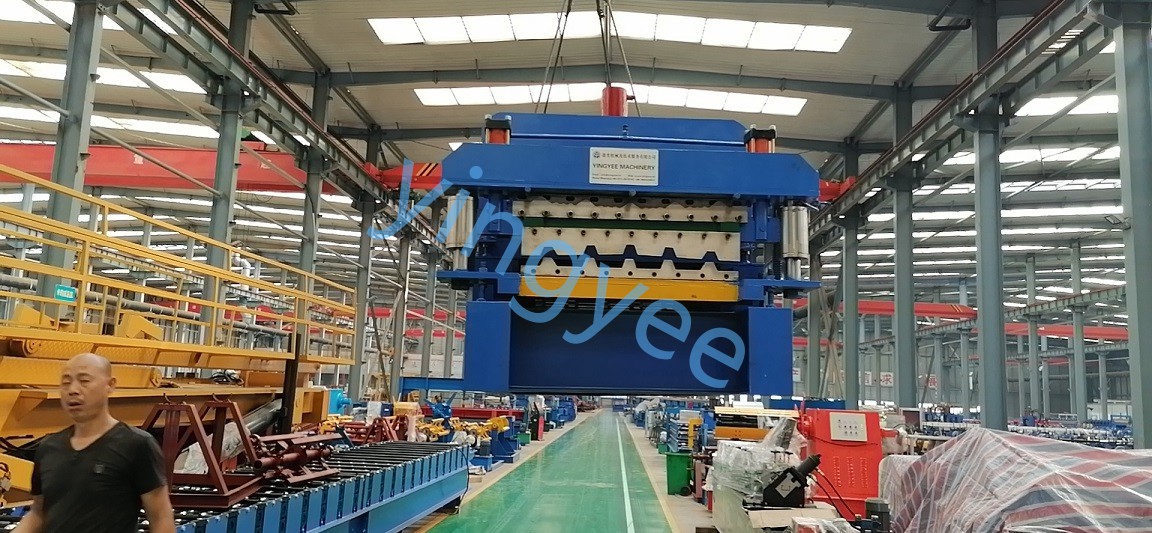
The Guardrail Spacer Cold Bending Machine Enhancing Safety and Efficiency in Road Construction
In the realm of road construction and safety management, the guardrail spacer cold bending machine has emerged as a pivotal advancement. This machine plays a crucial role in the production of guardrail systems designed to protect vehicles and pedestrians from roadside hazards. By ensuring that guardrails are manufactured with precision, the cold bending machine not only enhances the efficiency of construction projects but also significantly improves road safety.
Understanding the Functionality
The guardrail spacer cold bending machine is engineered specifically for the bending and shaping of guardrail components. Unlike traditional bending methods that often involve heat, this innovative machine utilizes cold bending technology. This process preserves the integrity of the metal, preventing any loss of structural strength that can occur with overheating. The cold bending method produces guardrails that are both robust and flexible, allowing them to absorb and dissipate impact effectively in the event of a collision.
The machine functions by employing a series of rollers and molds that guide the metal sheets through a series of bending processes. Operators can easily set the desired angle and curvature, ensuring consistent production of high-quality components. This not only enhances the speed of production but also reduces waste, as the machine allows for better precision in cuts and bends.
Benefits of Cold Bending Technology
One of the standout advantages of using a cold bending machine for guardrail production is the improved safety standards it offers. Traditional methods of guardrail installation often lead to inconsistencies and potential weaknesses in the infrastructure. However, with the cold bending machine, manufacturers can produce components that meet rigorous safety regulations. The durability of cold-bent guardrails ensures they can withstand the forces of vehicle impact, providing reliable protection for road users.

Moreover, the efficiency of the cold bending process translates into cost savings for construction projects. Faster production times mean that roadwork can be completed more swiftly, minimizing disruptions to traffic and reducing labor costs. Additionally, the machine's ability to produce high volumes of guardrail components reliably decreases the need for extensive inventories. This streamlined approach allows construction companies to allocate resources more effectively.
Environmental Considerations
In an era where environmental consciousness is paramount, the guardrail spacer cold bending machine contributes positively by minimizing waste and energy consumption. The precision of cold bending technology leads to fewer errors and defective products, resulting in less material waste. Furthermore, the energy required for cold bending is significantly lower than that for traditional hot bending methods. These factors make the cold bending machine an eco-friendly alternative, aligning with sustainability goals in the construction industry.
Conclusion
In conclusion, the guardrail spacer cold bending machine represents a significant technological advancement in the field of road construction and safety. By utilizing cold bending technology, it ensures the production of high-quality, durable guardrails that enhance safety and efficiency on roads. The benefits of reduced waste, cost-effectiveness, and compliance with safety standards make this machine an invaluable asset for manufacturers and construction companies alike.
As our road systems continue to evolve and expand, embracing innovative solutions like the guardrail spacer cold bending machine will be essential in promoting safer infrastructure. The attention to detail, efficiency in production, and commitment to quality that this machine embodies underscore the importance of technology in the quest to protect lives on the road. As such, the adoption of this machinery marks a progressive step toward modernizing road safety measures, ultimately contributing to the creation of safer travel environments for everyone.